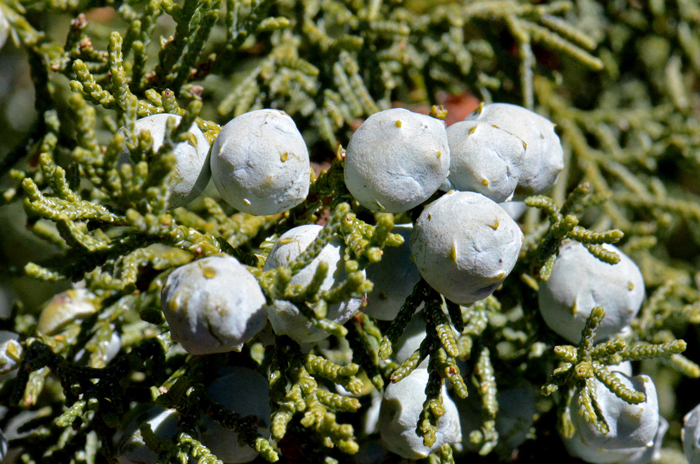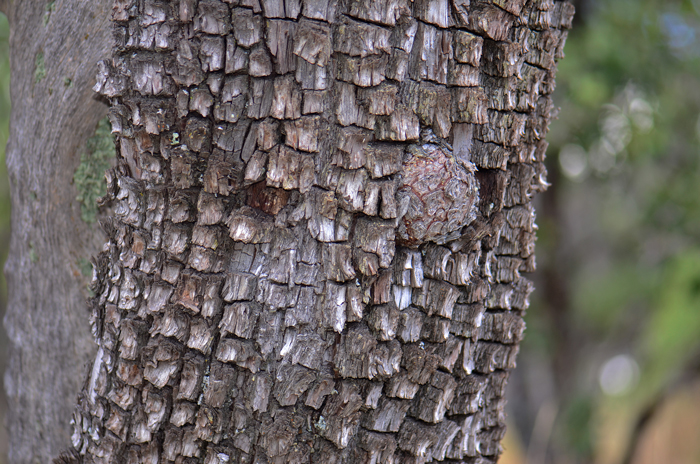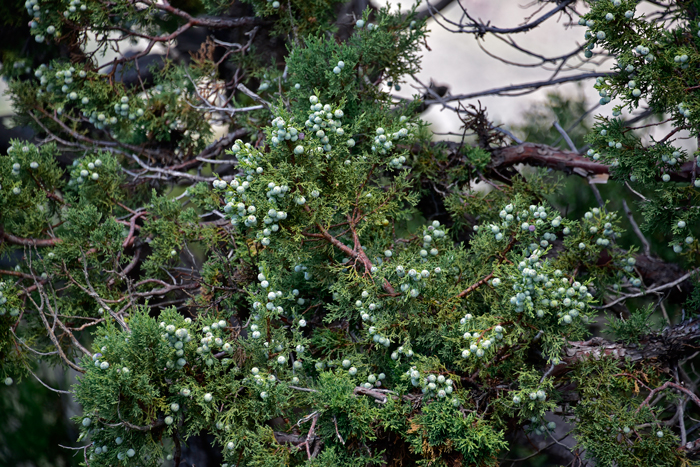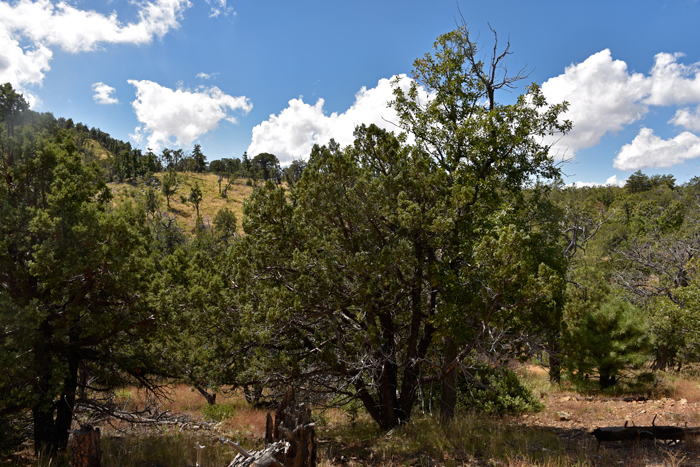Juniperus deppeana, Alligator Juniper




Scientific Name: Juniperus deppeana
Common Name: Alligator Juniper
Also Called: Alligator Juniper, Checkerbark Juniper, Mountain Cedar, Oakbark Cedar, Thickbark Cedar, Western Juniper, (Spanish: Tascate, Tacate, Tlascal)
Family: Cupressaceae, Cypress Family
Synonyms: (Juniperus deppeana ssp. sperryi, Juniperus deppeana var. pachyphlaea, Juniperus deppeana var. sperryi, Juniperus mexicana, Juniperus pachyderma)
Status: Native
Duration: Perennial
Size: Up to 65 feet tall.
Growth Form: Shrub, Tree; single trunk; stems bark ashy gray on the outside and dark brown to black on the inside; deeply fissured or furrowed into rectangular or checkered plates.
Leaves: Leaves usually decussate, closely appressed; scale-like; gland obvious.
Flower Color: Non-flowering species; cones only; gymnosperm; dioecious; pollen and seed cones terminal; seed cones sub-spheric to broad-ellipsoid; green maturing bluish to usually red-tan to red-brown in second year; glaucous, dry hard.
Flowering Season: January to March; cones; Non-flowering gymnosperm.
Elevation: 4,500 to 10,000 feet across range.
Habitat Preferences: Rocky soils, slopes, and mountains.
Recorded Range: Alligator Juniper is found in the Southwestern United States in AZ, NM and TX. Largest populations are found in Arizona. It is also common throughout northwestern and central Mexico.
North America & US County Distribution Map for Juniperus deppeana.
U.S. Weed Information: No information available.
Invasive/Noxious Weed Information: No information available.
Wetland Indicator: No information available. In North America species has the following wetland designations: Arid West, FACU; Great Plains, FACU; Western Mountains, Valleys, and Coast, FACU.
FACU = Facultative Upland, usually occur in non-wetlands, but may occur in wetlands.
Threatened/Endangered Information: No information available.
In the Southwestern United States: Arizona and New Mexico each have 8 species of Juniperus, California has 5 species, Nevada has 6 species, Texas has 8 species, Utah has 4 species. All data is approximate and subject to taxonomic changes.
Comments: Alligator Juniper is one of the largest Junipers in the southwestern United States. It is important to wildlife. Its berries are eaten by birds and mammals. The plants are important for cover value providing habitat, nest sites, shade and shelter for many bird and other species. Young and mature trees provide cover for elk, deer and several small mammals.
For a comprehensive thoroughly documented review of Juniperus deppeana see the USDA USFS Fire Effects Information System, or FEIS.
In Southwest Desert Flora also see: California Juniper, Juniperus californica, Redberry Juniper, Juniperus coahuilensis, Oneseed Juniper, Juniperus monosperma, Utah Juniper, Juniperus osteosperma and Arizona Cypress, Cupressus arizonica.
Alligator Juniper has been used for food by southwestern United States indigenous peoples.
See complete listing of ethno-botanical uses at Native American Ethnobotany, University of Michigan, Dearborn.

